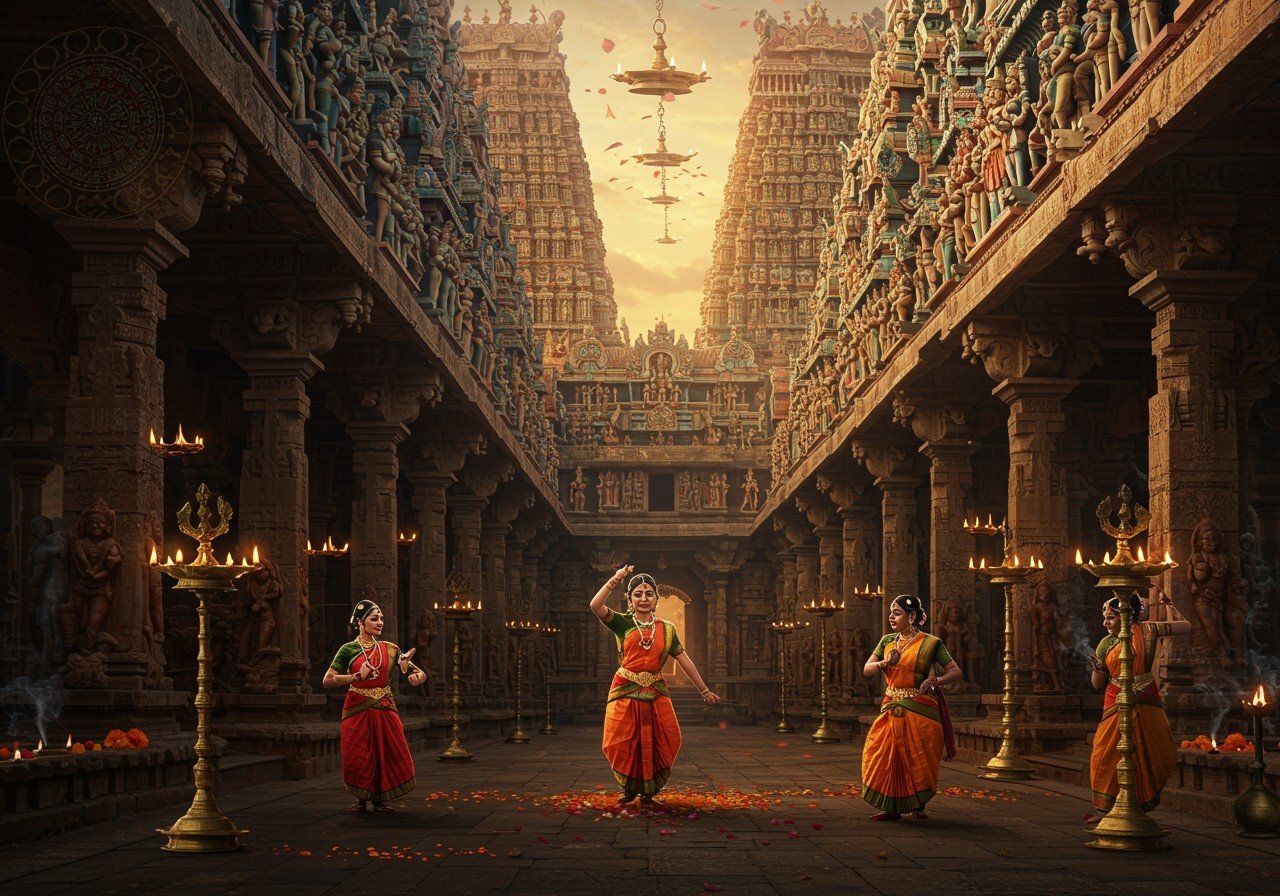
Embark on a journey to discover the rich cultural heritage of the Nayak dynasty, a lineage that significantly shaped South Indian history and traditions. Explore their impact on regions like Madurai, Thanjavur (formerly Tanjore), and Gingee, delving into their contributions to art, architecture, and cultural practices that continue to resonate in contemporary South India.
Origins and Rise of the Nayaks
The Nayak dynasties emerged as prominent Hindu rulers during the Kakatiya dynasty and the Vijayanagara Empire in South India. Following the decline of the Vijayanagara Empire, Nayak rulers, particularly in Madurai, established their own independent polities. Key figures like Viswanatha Nayak, the founder of the Madurai Nayak dynasty, played a crucial role in consolidating their power and establishing efficient administration. The Madurai Nayaks, of Telugu origin, ruled Tamil Nadu from 1529 to 1736. The socio-political landscape of the time, marked by the Vijayanagara Empire’s fragmentation, provided the Nayaks with the opportunity to rise to prominence.
Flourishing of Arts and Culture under the Nayaks
The Nayak dynasties were renowned patrons of art, architecture, and culture. Their reign witnessed a flourishing of artistic expression, particularly in temple architecture, sculpture, and painting. The Nayaks also extended their patronage to classical dance forms like Bharatanatyam and Carnatic music, contributing significantly to their development and preservation. Their support for literature, including the compilation of works in Tamil and Telugu, further enriched the cultural landscape of the region. They also nurtured traditional crafts and artisans, ensuring the continuity of artistic traditions.
The Symbolic Significance of the Madurai Nayak Flag
The flag of the Madurai Nayak dynasty held deep symbolic meaning. Its design elements and colors reflected the dynasty’s power, authority, and cultural identity. Historical anecdotes and events associated with the flag highlight its importance as a symbol of Nayak pride and heritage. The flag’s continued presence in contemporary cultural practices underscores its enduring relevance and significance.
Architectural Marvels of the Nayak Period
The Nayak dynasty left behind a legacy of impressive architectural achievements. Structures like the magnificent Meenakshi Amman Temple in Madurai, with its intricate carvings and towering gopurams, and the opulent Thirumalai Nayakkar Mahal, known for its expansive courtyards and grand pillars, stand as testaments to their architectural prowess. The Nayaks introduced innovative architectural styles, incorporating elements like long corridors, intricately carved mandapas, and multi-storied gopurams, which became characteristic features of Nayak temple architecture.
Rituals and Traditions: A Continuing Influence
Many rituals and traditions prevalent in South India today bear the influence of the Nayak dynasty. The Nayaks were patrons of various religious ceremonies and festivals, including the grand Chithirai Festival in Madurai, which continues to be celebrated with great fervor. Their contributions to temple rituals and the establishment of religious institutions played a significant role in shaping religious practices in the region.
The Enduring Legacy of the Nayaks
The Nayak dynasty’s impact on contemporary South Indian culture remains profound. Nayak-era art, architecture, music, and traditions continue to be celebrated and preserved by cultural organizations and institutions. Scholars and researchers actively study and revive Nayak history and culture, ensuring that their legacy remains vibrant and relevant for future generations.
How Poojn.in Helps Preserve Nayak Cultural Heritage
Poojn.in, India’s leading online store for cultural goods and services, offers a wide selection of authentic ritual items that connect you to the rich Nayak cultural legacy. Our extensive collection includes:
- Traditional Holy Idols (48 varieties): These idols reflect the artistic excellence of Nayak temple sculptures, allowing you to bring the sacred presence of deities into your home. Explore our collection of Holy Idols.
- Authentic Holy Utensils (40 types): Similar to those used in Nayak-era temples, these utensils enhance the authenticity of your rituals and ceremonies. Find the perfect Holy Utensils for your needs.
- Sacred Pooja Samagri (186 products): From incense and lamps to flowers and offerings, our Pooja Samagri collection provides everything you need for traditional Nayak-style rituals. Discover our wide range of Pooja Samagri.
- Complete Pooja Kits: Simplify your preparations with our pre-assembled Pooja Kits for various ceremonies and festivals. Browse our selection of Pooja Kits.
- Holy Jewelry (19 selections): Adorn yourself with exquisite jewelry inspired by Nayak period designs, connecting you to the rich cultural heritage. Explore our Holy Jewelry collection.
For those seeking an immersive experience of Nayak-style temple worship, we highly recommend our premium Pooja Samagri collection. Each item is carefully sourced and crafted to meet the highest standards of traditional Hindu rituals and ceremonies.
Visit www.poojn.in to explore our complete collection and enrich your spiritual practices with the timeless traditions of the Nayak dynasty.
Explore related articles about South Indian temples and traditions:
- Pitambara Peeth: A Pilgrim’s Complete Guide
- Antarvedi Lakshmi Narasimha Temple: Your Complete Visit Guide
- Ram Raja Temple, Orchha: A Unique Architectural Marvel


